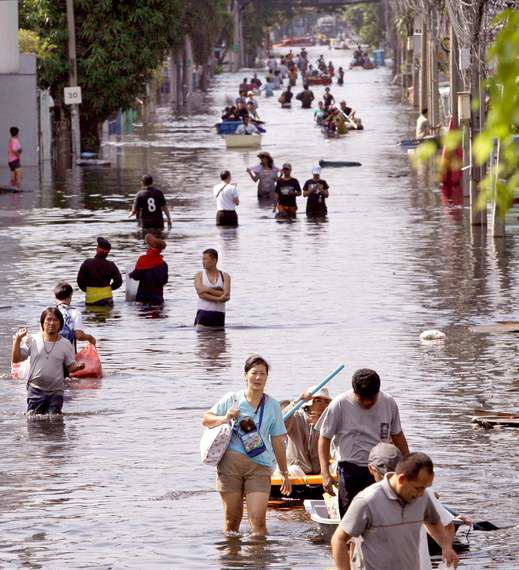Report: Future holds more bad weather
Published 5:00 am Wednesday, November 2, 2011

- Thai residents carrying their belongings move to higher ground at Bangkok's Don Muang district. Experts on extreme storms predict more frequent severe rainstorms by the end of the century.
WASHINGTON — For a world already weary of weather catastrophes, the latest warning from top climate scientists paints a grim future: more floods, more heat waves, more droughts and greater costs to deal with them.
A draft summary of an international scientific report obtained by The Associated Press says the extremes caused by global warming could eventually grow so severe that some locations become “increasingly marginal as places to live.”
The report from the Nobel Prize-winning Intergovernmental Panel on Climate Change marks a change in climate science, from focusing on subtle shifts in average temperatures to concentrating on the harder-to-analyze freak events that grab headlines, hurt economies and kill people.
“The extremes are a really noticeable aspect of climate change,” said Jerry Meehl, senior scientist at the National Center for Atmospheric Research. “I think people realize that the extremes are where we are going to see a lot of the impacts of climate change.”
The final version of the report from a panel of leading climate scientists will be issued in a few weeks, after a meeting in Uganda. The draft says there is at least a 2-in-3 probability that climate extremes have already worsened because of man-made greenhouse gases.
The most recent bizarre weather extreme, the pre-Halloween snowstorm that crippled parts of the Northeast last weekend, cannot be blamed on climate change and probably isn’t the type of storm that will increase with global warming, according to four meteorologists and climate scientists.
Experts on extreme storms have focused more closely on the increasing number of super-heavy rainstorms, not snow, NASA climate scientist Gavin Schmidt said.
By the end of the century, the intense, single-day rainstorms that typically happen once every 20 years will probably happen about twice a decade, the report said.
The opposite type of disaster — a drought such as the stubbornly long dry spell gripping Texas and parts of the Southwest — could also happen more often as the world warms, said Schmidt and Meehl, who reviewed part of the climate panel report.
Studies have not yet specifically tied global warming to the continuing drought, but it is consistent with computer models that indicate current climate trends will worsen existing droughts, Meehl said.
Scientifically connecting a weather disaster with global warming is a complicated and time-consuming task that can take more than a year and involve lots of computer calculations.
Researchers have also predicted more intense monsoons with climate change.
Warmer air can hold more water and impart more energy to weather systems, changing the dynamics of storms and where and how they hit.
Thailand is now coping with massive flooding from monsoonal rains — an event that illustrates how climate is also connected with other man-made issues such as population growth, urban development and river management, Schmidt said.
In fact, the report says, “for some climate extremes in many regions, the main driver for future increases in losses will be socioeconomic” rather than a result of greenhouse gases.






